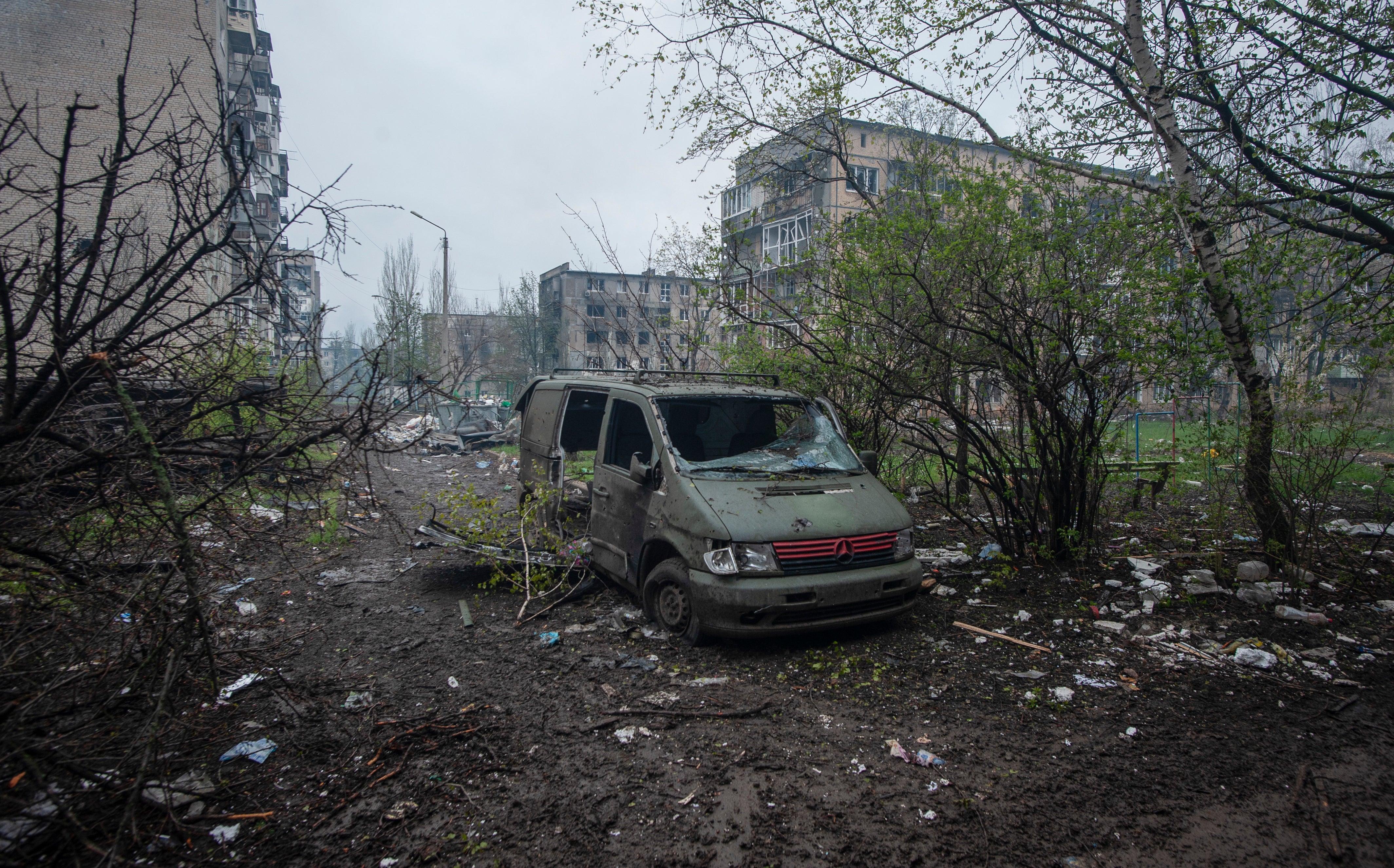Report: Ukrainian forces across key river, raising hopes
A Washington-based think tank says that Ukrainian forces have successfully crossed the wide Dnieper river in the country's south to establish and maintain positions on its east bank

Ukrainian military forces have successfully established positions on the eastern side of the Dnieper River, according to a new analysis, giving rise to speculation Sunday that the advances could be an early sign of Kyiv's long-awaited spring counteroffensive.
The Institute for the Study of War, a Washington-based think tank, reported late Saturday that geolocated footage from pro-Kremlin military bloggers indicated that Ukrainian troops had established a foothold near the town of Oleshky, along with “stable supply lines” to their positions.
Analysts widely believe that if Ukraine goes ahead with a spring counteroffensive, a major goal would be to break through the land corridor between Russia and the annexed Crimean Peninsula, which would necessitate crossing the Dnieper River in the country's south.
Responding to Ukrainian media reports proclaiming that the establishment of such positions indicated the counteroffensive had begun, Natalia Humeniuk, the spokeswoman for Ukraine’s Operational Command South, called for patience.
While neither confirming nor denying the ISW report, she said only that details of military operations in the Dnieper delta couldn't be disclosed for operational and security reasons.
Speaking on Ukrainian television, Humeniuk added that it was “very difficult work” when “it’s necessary to overcome an obstacle such as the Dnieper, when the front line passes through a wide and powerful river.”
After more than a year since the Russian invasion, recent fighting has become a war of attrition, with neither side able to gain momentum.
But Ukraine has recently received sophisticated weapons from its Western allies, and new troops freshly trained in the West, giving rise to growing anticipation of a counteroffensive.
The fiercest battles have been in the eastern Donetsk region, where Russia is struggling to encircle the city of Bakhmut in the face of dogged Ukrainian defense.
In the south, the Dnieper has for months marked the contact line in the Kherson region, where its namesake capital is regularly pummeled by shelling from Russian forces stationed across the river.
In addition to having established a foothold near the town of Oleshky, across the Dnieper delta from Kherson, ISW said that Ukrainian troops were also approaching the nearby village of Dachi, citing data from Russian military bloggers.
In Telegram posts on Thursday and Saturday, ISW said the bloggers claimed that Ukrainian forces had maintained these positions for weeks and established stable supply lines to them, indicating a lack of Russian control over the area.
The Associated Press confirmed the posts from the bloggers, but it wasn't immediately possible to independently verify the data they shared.
Russia is also expected to launch more intensive attacks in the spring, but ISW reported that top Russian defense figures are showing signs that they may be pushing for a consolidation of existing gains in Ukraine, rather than costly new operations, as Moscow struggles with both material and manpower.
The think tank cited comments from financier Yevgeniy Prigozhin, the head of the Wagner Group — a private Russian military company whose fighters have spearheaded the offensive on Bakhmut.
On Saturday, Prigozhin's press service posted comments he made on its official Telegram channel in which he argued that Russian forces need to “anchor (themselves) in such a way that it is only possible to tear them out with (the) opponent's claws.”
The interview was published shortly after Western leaders meeting at the Ramstein Air Base in Germany pledged to train more Ukrainian personnel and keep up their military support for Kyiv.
As Moscow seeks to bolster its troop numbers, the U.K. Ministry of Defense noted Sunday in an intelligence briefing that Russian authorities had mounted a large-scale military recruitment campaign using social media, billboards and state television.
It said Russian officials are “almost certainly seeking to delay any new, overt mandatory mobilization for as long as possible to minimize domestic dissent,” while assessing that this latest effort would likely fail to meet the defense ministry's stated goal of recruiting 400,000 new volunteers.
In attacks overnight, local authorities in eastern Ukraine reported that Russian forces had launched at least five S-300 missiles at Kharkiv, the country’s second-largest city and the surrounding region.
The missiles damaged an industrial facility and private homes but caused no casualties, according to Oleh Syniehubov, the Kharkiv regional governor.
In Kherson, one civilian was killed and two were wounded as Russian troops used artillery, drones and warplanes to launch a total of 54 strikes on the province, Gov. Oleksandr Prokudin said on Telegram on Sunday morning.
In the neighboring Zaporizhzhia region, Russian shelling wounded a 56-year-old man in Stepnohirsk, a town on the banks of the Dnieper river, local Gov. Yurii Malashko wrote on Telegram.
Russian forces on Saturday and overnight also dropped five guided aerial bombs over the Kherson region, Ukraine’s Operational Command “South” said in a Facebook post Sunday. According to the post, the bombs were launched from drones and aircraft and damaged multiple residential buildings, but caused no casualties.
___
Joanna Kozlowska reported from London.
Bookmark popover
Removed from bookmarks